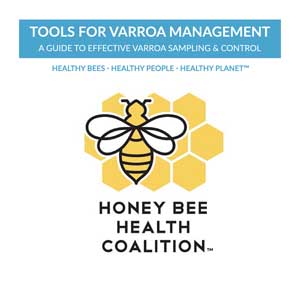The Honey Bee Health Coalition has released a new edition of “Tools for Varroa Management,” a guide providing information on the latest tools and options for beekeepers in the United States and Canada to manage varroa mites, which spread disease within and among honey bee colonies.

According to a news release announcing the eighth edition of the publication, the guide explains practical, effective methods beekeepers can use to measure varroa mite infestations in their hives and select appropriate control methods.
“The successful management of varroa mites is critical to keeping honey bees healthy,” Ana Heck, apiculture extension educator at Michigan State University, said in the release.
According to the news release, varroa mites are one of the most serious threats to honey bee health, honey production and pollination services. Untreated or ineffectively treated colonies can fail, causing economic losses to beekeepers and potentially impacting agricultural food production. Colonies infested with varroa mites are also a potential source of mites and diseases that can spread to other colonies and apiaries.
A team of beekeepers, entomologists, extension agents, apiary inspectors and federal regulators worked together to update the guide with best practices and treatment options, including new information on varroa mite control products that have been approved for use since the seventh edition was released in 2018.
Dewey Caron, professor emeritus of entomology and wildlife ecology at the University of Delaware, said the guide is a valuable tool for varroa mite management. “It has what you need to know in one streamlined and concise package,” said Caron, a principal author of the updated guide. “It should help improve overwintering success by helping you flatten the varroa growth curve and reduce bee colony viral epidemics.”
The full guide is offered free of charge at the Honey Bee Health Coalition’s website: honeybeehealthcoalition.org/resources/varroa-management.
—by Jonelle Mejica






Leave A Comment